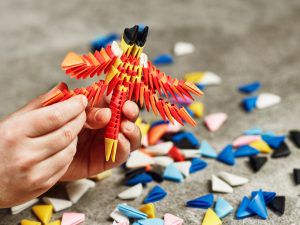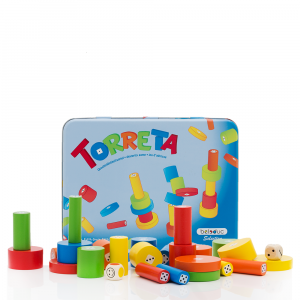Mathematics
Building Toys Help Children Excel at Mathematics
Helping children learn mathematics is easier than what people tend to think. Traditional building toys such as building blocks, jigsaw puzzles and play with geometrical shapes make the brain more adept to understanding mathematics.
Such building toys aid the development of spatial understanding. They help us understand the three dimensional world we live in. Our sense of space is essential for example when loading a car, reading a map or cutting a cake. This skill is also a key stone in many professions which include navigation or control of the movements of a vehicle, such as ensuring that an airplane takes off and lands safely. Moreover, a good sense of space also comes in handy when you’re putting together a piece of furniture from IKEA or installing a children’s seat in your car.
A Sense of Space and Mathematics
Mathematics and a sense of space are connected. Such is established by numerous scientific reports. A child’s sense of space at the age of three can to a large extent predict how well the child will perform in mathematics a year later. Moreover, children with a well developed spatial understanding between ages 9-12 often apply to higher education involving advanced mathematics and science later in life. Such fields of study do not only require a good understanding of numbers; but also diagrams, timelines and maps. A good sense of space is essential in the understanding of these concepts.
Furthermore, there are connections between the brain areas which provide understanding of numbers and the areas which make us grasp space and time. Therefore brain researchers often speak of “space, time and number in the brain”. The brain cells we use to learn the meaning of numbers create a mental number line of sorts, which gains support from the sense of space. Due to this, games with number lines and the use of rulers and measuring bands can aid a child in developing a brain adept for learning mathematics.
Spatial understanding is developed when a child plays with building toys. These toys provide understanding of space and shapes. In building with blocks, for instance, many situations in which we have to think mathematically occur. The blocks have to be sorted, measured and counted. We might want to put them together in a particular order or form. When doing this, the brain builds an understanding of patterns, shapes, size and much else.

3 tips on how to use building toys for learning
How can adults ensure that children gain a sense of space when using building toys? The most important tips are as follows:
1. Describe placement and space
All play with blocks such as Lego or magnetic pieces help develop a sense of space. They let children experience that smaller parts can be combined and make larger parts. Such toys also invite for counting and the discovery of how measuring is essential for things to fit together. While engaging in these activities, the adult can talk about what you are doing, and use words which describe placement and space. These conversations tend to occur naturally if you for example use an instruction manual together. In other words, children benefit from building with others. This develops both language and cooperation skills.
2. Use a wide variety of shapes
Jigsaw puzzles are good too, because they train the ability to rotate shapes and seeing how smaller parts can be combined into larger parts. Science shows that simple puzzles already at the age of two have a beneficial effect.
3. Describe differences between shapes
Shape toys and other toys which demand recognition of geometrical shapes are also good. The adult can talk about triangles, squares and circles. You can also talk about what signifies the different shapes. A triangle, for example, has three sides and three corners. A circle only has one continuous side and no corners. It can also be beneficial to make the child aware that the shapes exist elsewhere too. For example, how many squares can you count in the room you are playing in?
The sense of space will also further develop in many other contexts. For example when the child builds a tree house or when they form something with their hands such as a paper plane or clay. Not to mention if you arrange a treasure hunt with a map.
Without doubt, traditional building toys are excellent for a child’s development. The effect is even greater when adults are aware of the opportunities for learning which exist in these toys.

Literature:
- Finding the missing piece: Blocks, puzzles, and shapes fuel school readyness. BN Verdine et al, Trends in Neuroscience and Education, vol 3, p 7-13 2014
- Building play and cognitive skills associated with the development of mathematical abilities in 7-year-old children. Learning and instruction, vol 23, s 73-80, 2014

